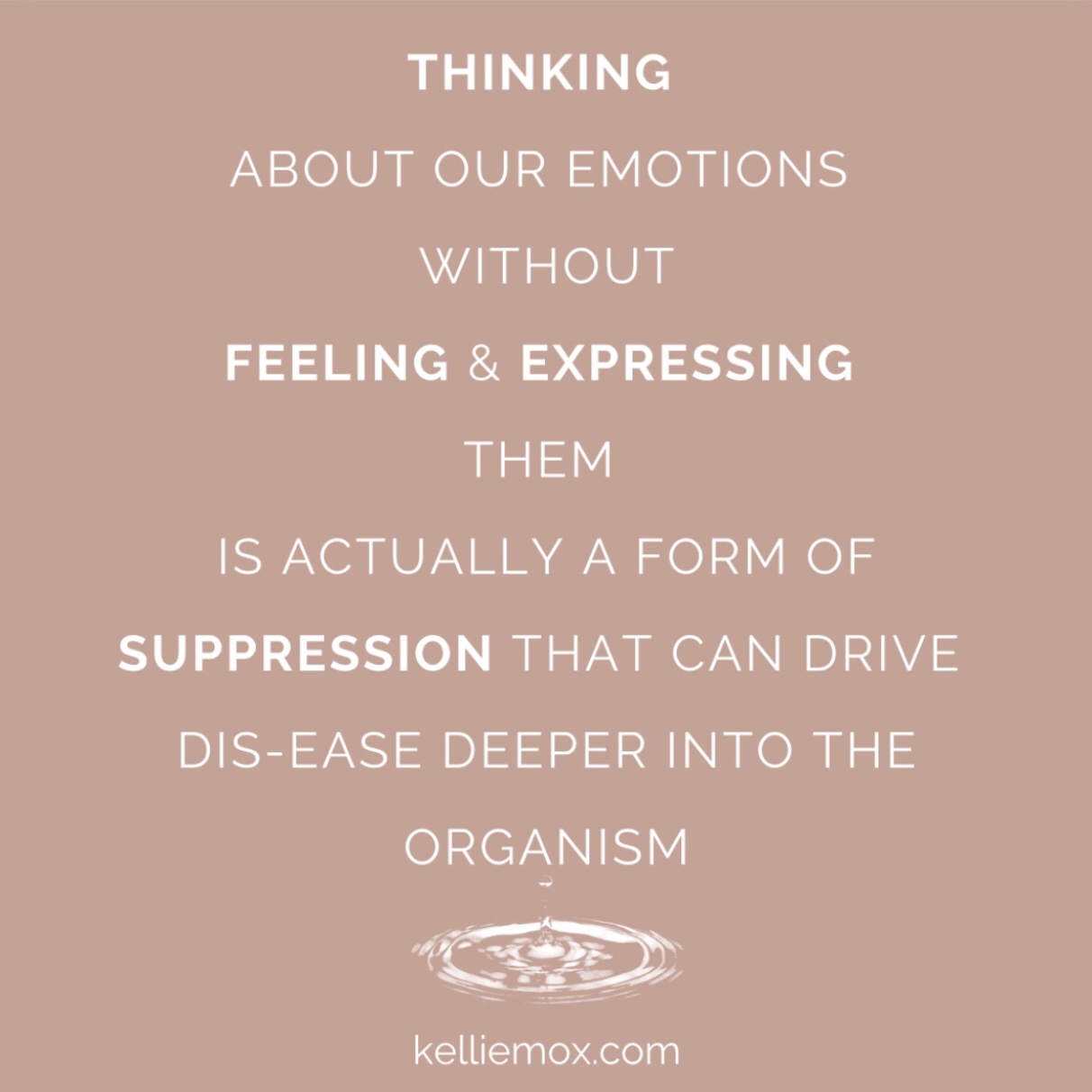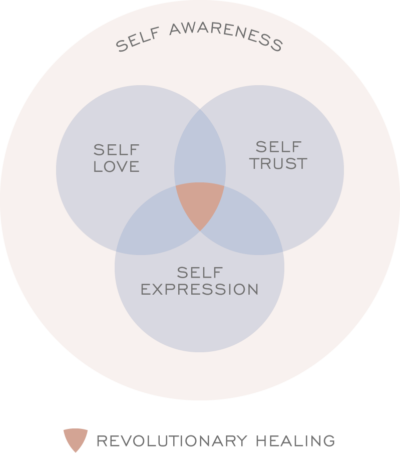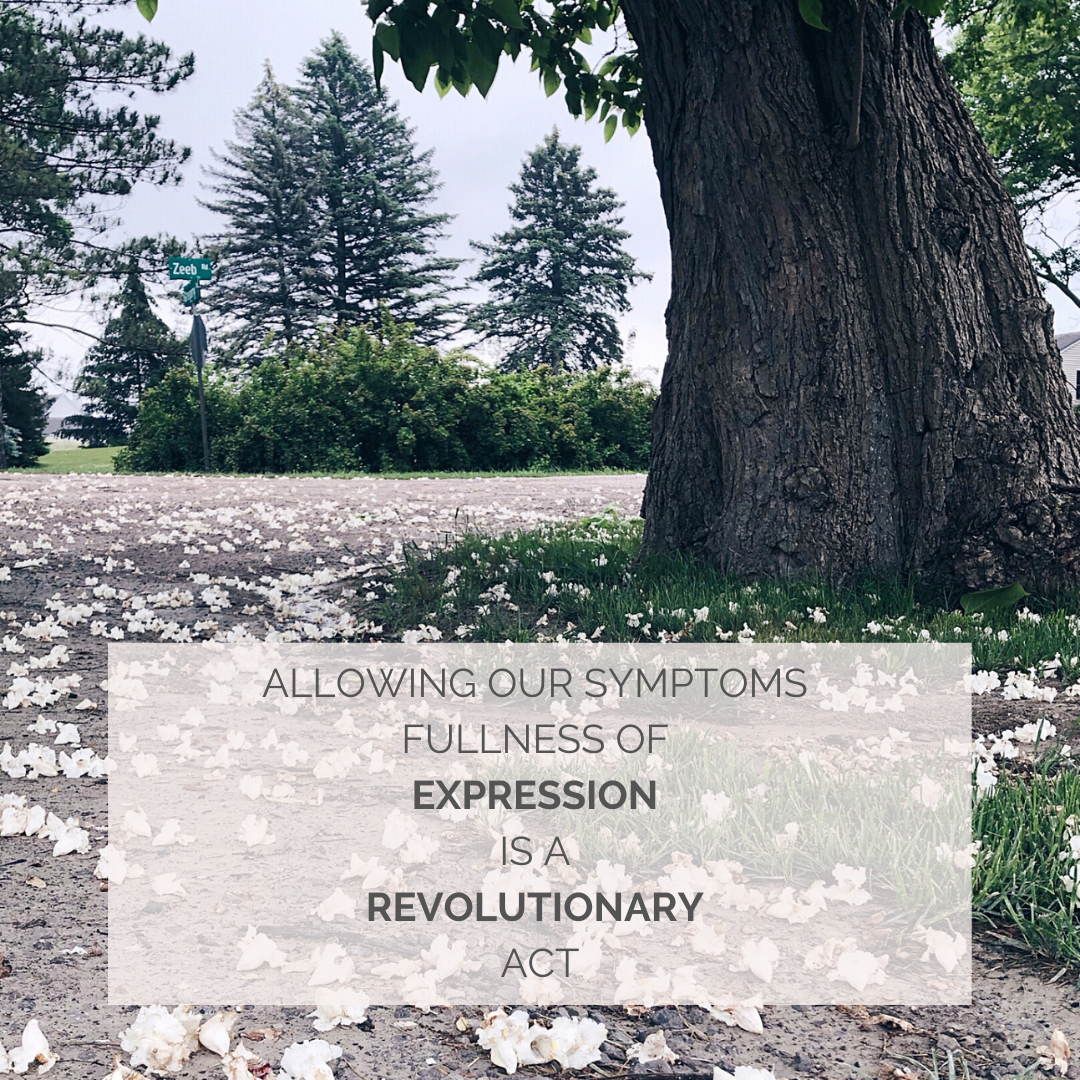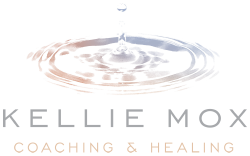I’m still learning how to embody the magic and medicine of self-expression after years of actively healing my body, mind, heart, and spirit through expressive practices.
My therapist highlighted this recently when I shared a letter with her that I’d written in my journal. I’d intended to feel and express my anger through this writing; however, after three tries (including two invitation from her to try again), she helped me see how I’d intellectualized the emotion every single time.
I quite easily thought and wrote ABOUT my anger, but I didn’t actually FEEL or EXPRESS it.
Suppression of Self
Anger is one of the four core human emotions. If you’ve never felt it, it’s not because it’s not there. You may be unaware of its presence, OR you may be aware of it but disconnected from fully feeling and expressing it. Either case offers an example of suppression.
My therapist refers to me as an imploder. For decades I unconsciously restricted my angry parts that needed an outlet, but this was not without side effects. When anger has nowhere to go but inward again and again, it devastates the body and mind.
I use the example of imploding anger here, but the extent of our suppression extends well beyond this one emotion. The ways we suppress our wholeness, our authenticity, our vitality are numerous. Suppression—and expression—happen on the level of the body, emotions, mind, and spirit. Every feeling, thought, vibe, image, sensation, and part of ourself can be regarded as a symptom that can be expressed or suppressed.
This is an important topic for revolutionary healing, because chronic suppression drives dis-ease deeper into our being, leading to chronic illness. Revolutionary healing calls for fullness of self-expression.

Chronically suppressed emotions (i.e. anger) —> chronic physical, emotional, mental, and spiritual dis-ease
Likewise…
Chronically suppressed physical symptoms (i.e. pain) —> chronic physical, emotional, mental and spiritual dis-ease
When we suppress our true self over and over again, our body, heart, mind, and spirit will find a way to communicate its dis-ease.
For me, anorexia, anxiety, autoimmune dis-ease, and even Lyme were manifestations of years suppression of self.
Why We Suppress
While this post is not about the WHY of suppression, it’s important to mention that a lack of safety (or the lack of a SENSE of safety) is a primary driver of suppression.
That is, suppression of emotions is often a survival strategy, one we turn to when it feels too dangerous to reveal our whole self. It’s self-protective and it’s adaptive. These self-protective coping strategies become wired into our physiology, and they feel hard to shift, I know. But when you are safe or can create containers in which you can feel safe, fullness of self-expression can be cultivated with time and practice. Understanding this allows us to have more compassion for ourselves and understanding for all the ways suppression manifests in our lives.
Ways We Suppress
I’ve put together a list of some of the ways suppression shows up in our lives. This list needs your input, too. What would you add? Drop a comment and let me know.
Note: Noticing the ways you are engaged in suppression, either consciously or unconsciously, is not an invitation to find fault. Rather, it’s an invitation to notice our repetitive, often self-protective, patterns.
- Ignoring our body’s needs and impulses. (Not eating when we’re hungry or eating when we’re NOT hungry; holding in urine, stool, gas; staying up too late when we’re tired).
- Telling ourselves or others we are fine (when we’re not).
- Anti-biotics, anti-inflammatories, anti-pyretics, anti-acids, anti-almost anything.
- Resisting our tears or other natural release processes.
- People-pleasing.
- Criticizing or censoring our bodies (or any part of our self).
- Numbing ourselves. (Excessive drinking, drugging, shopping, scrolling, sleeping, eating, busy-ness).
- Staying small, hiding out, not allowing ourselves to be seen.
- Comparing ourselves to others.
- Disregarding our intuition.
- Shunning parts of ourselves (our masculine or feminine energies, our inner child, our angry parts).
Self-Expression for Revolutionary Healing
When we consider the “how to” of authentic self-expression, there’s not one right way. However you choose to explore and practice expressing, I encourage you to invite curiosity and compassion into the process. Also note that there is no endpoint to achieve here; self-expression and suppression, like most human experiences, exist on a continuum. In any moment you can ask yourself:
Am I moving toward or away from self-expression?
Am I moving toward or away from suppression?

Ultimately, self-expression is about connection with ourselves, others, and the world. Before we can express ourselves fully out there, we must explore how we express for and with ourselves in here, which happens in the firm foundation of self-awareness. Note: Being aware of our experience is not the same thing expressing it. Both are important for healing.
AND, the seeds of our physical, emotional, mental, and spiritual dis-eases are often planted when we disconnect from our wholeness (i.e. suppress our self), which we often do IN ORDER TO FEEL SAFE amidst disconnection from another or a group (family, community, culture). This is why co-creating a container of safety and connection with another human can be a powerful way to allow our self-expression to flow again, and therefore, restore our wholeness and healing. This may, at first, be a container you co-create with a therapist, coach, homeopath, or other healing practitioner.
Ways We Express
As above, the list I’m offering is just a beginning look at some of the ways we can move toward self-expression. What would you add here?
- Listening to our body and honoring her needs or impulses.
- Allowing our physical, emotional, mental, and spiritual symptoms a voice with ourselves (e.g. being WITH them, hearing them, dialoguing with them).
- Drawing, moving, singing, crying, humming, shaking, creating, releasing energy in a somatic way.
- Allowing our tears to flow.
- Setting boundaries with ourselves and/or others.
- Loving on ourselves (kind words, nourishing acts, expressing the love we have for ourselves).
- Sharing the truth of our feelings with another (with boundaries and when it is safe).
- Intentional breathing or intentional movement with another.
- Putting our talents, passions, or gifts out in the world.
- Following our intuition.

P.S. On my fourth try, I finally connected with and expressed my anger in my journal, but ONLY after I connected into the sensation of anger in my body. That looked like me singing Alanis at the top of my lungs when I’m alone in the car, hitting the punching bag, and dancing alone in my bedroom. It’s a journey of self-discovery. If you’re curious about exploring your own revolutionary healing, too, know you are always welcome into my Zoom room for a free exploratory chat.


